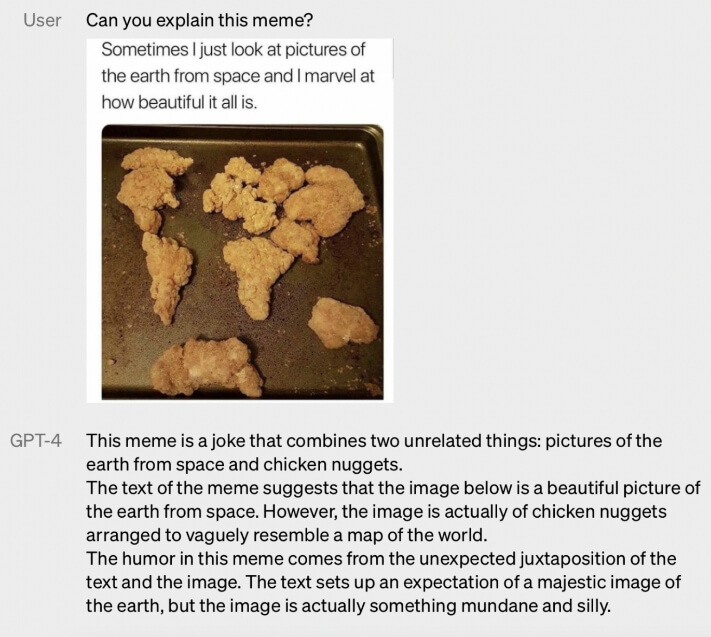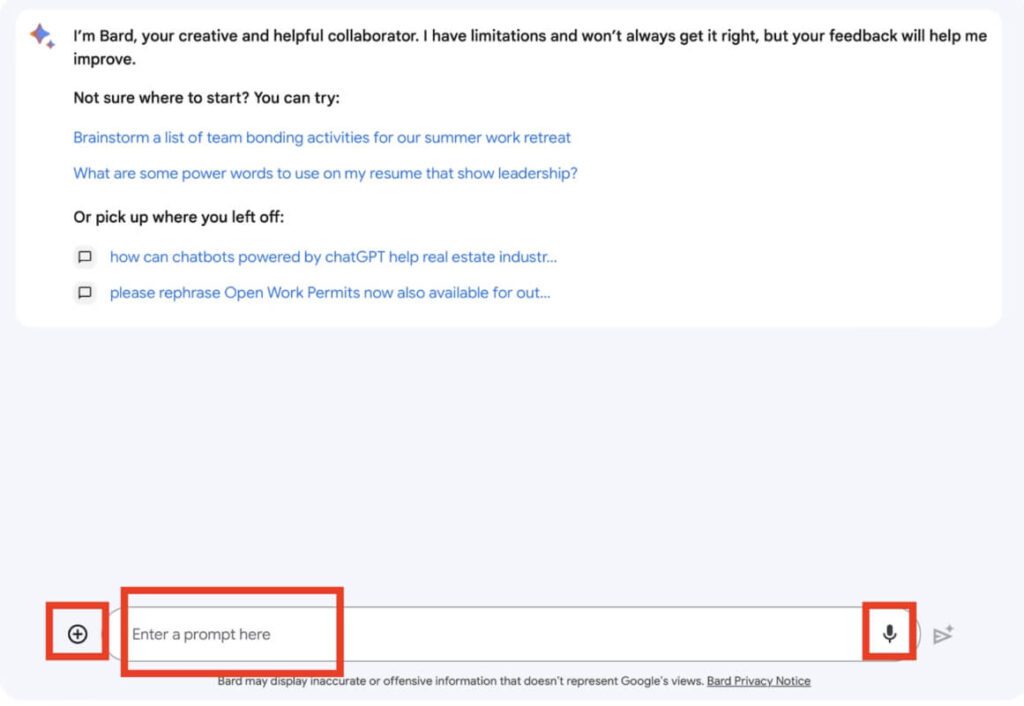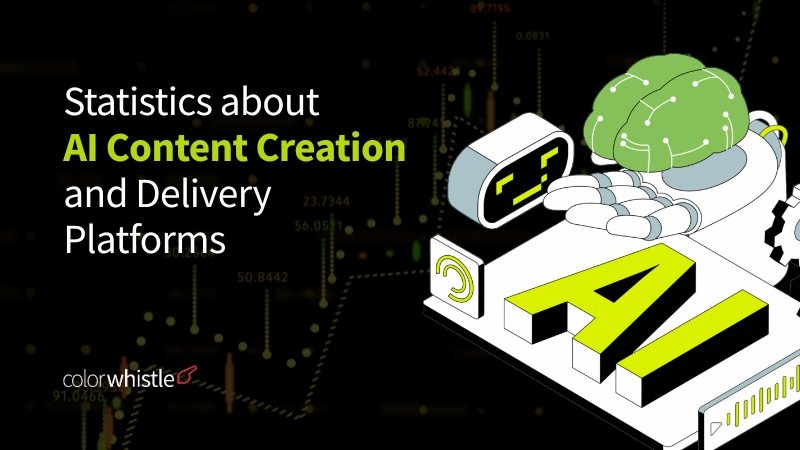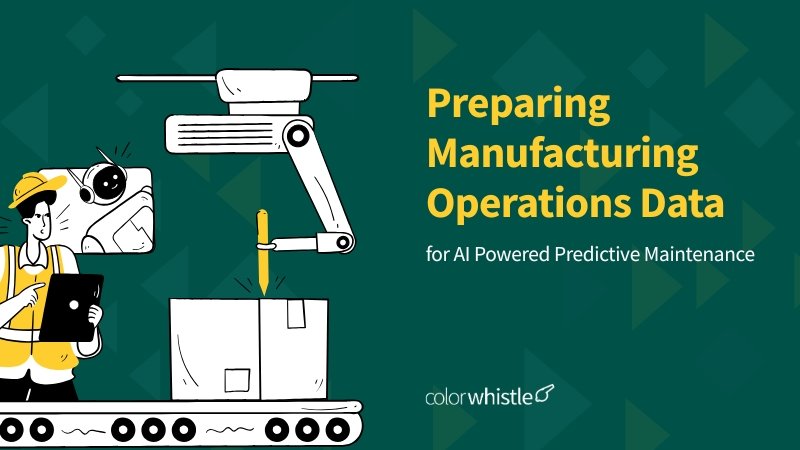It is a relief how the explosion of AI has enabled an average creator to give tough competition to someone in the top 5% in their respective field. Even though it is a speculative figure, AI content creation is surely democratizing creativity, enabling aspiring creators to produce professional-level content without extensive technical expertise.
AI technology and creator-generated content are the two major trends currently defining digital media. The amalgamation of both, leading to AI-powered content creation, is evolving and revolutionizing content generation, optimization, and personalization.
We are now approaching innovations in content creation towards artificial general intelligence via a multimodal foundation model that seems more exciting and wide-ranging.
It involves multimodal data (text, images, audio, video) for generative AI tasks like automating coherent and diverse text, creating images, editing video, composing audio, data augmentation, or even building an entire website.
Popular generative AI tools like MidJourney, Jasper.ai, and ChatGPT record millions of active users daily. The solid adoption rate of 27%-29% by generation led by Gen Z at work in the United States defines its true potential.
We are curious to discuss this further. So, here it is.
What is Multimodal Content Creation?
Multimodal content creation refers to integrating multiple types of media or modalities, such as text, images, audio, and video, to create more comprehensive and engaging content.
In traditional content creation, each modality is separate, but in multimodal content creation, these different types of media combine to enhance the overall message and user experience. For example,
- Interactive E-Learning: E-learning platforms can use a combination of video lectures, written content, images, and interactive quizzes to create engaging and effective online courses.
- Social Media Posts: Social media content often includes a mix of text, images, videos, and emojis to communicate ideas, emotions, and experiences more vividly.
- Infographics: Infographics combine text, visuals, and graphics to present complex information in a visually appealing and easy-to-understand format.
- Podcasts & Webinars: Podcasts typically involve audio content combined with show notes, transcripts, and images to provide a multifaceted experience for listeners. Webinars can include live video presentations, text-based chats, interactive polls, and downloadable resources to create an immersive virtual event.
- Augmented Reality (AR) and Virtual Reality (VR): AR and VR experiences integrate visual, auditory, and sometimes haptic feedback to create immersive simulations or interactive storytelling.
Also Read
But, 75 percent of the economic value that generative AI use cases could deliver may be from marketing and sales activities per a McKinsey study, reinforcing the potential of content creation with AI.
Discovering Multimodal Content Creation with AI


The integration of AI and advanced technologies further enhances the potential for creative and interactive multimodal content creation in various industries, ensuring easy scalability and increased productivity.
Unimodal AI for Content Creation
Multimodal Content Creation with AI
AI content creation focuses on generating written textual content using AI-powered language models, often centered around Natural Language Processing (NLP), Natural Language Understanding (NLU), and Natural Language Generation (NLG) technologies.
Multimodal content creation with AI incorporates various media types (text, images, video, speech, and possible sound) to create interactive and engaging content, enabling more immersive user experiences.
Machine learning, especially with the advent of deep learning, has revolutionized AI by allowing models to learn patterns and representations directly from data without relying heavily on predefined rules, unlike the traditional AI approach where humans defined logic.
Currently, popular AI systems are limited to being unimodal, as they focus on processing information from a single modality, be it text OR images (data source).
The near future of AI lies in multimodal AI systems, which have the capability to handle inputs and outputs from multiple modalities, including sounds, images, text, and video.
This data-driven approach has led to significant advances in various AI applications, including natural language processing, computer vision, image and speech recognition, language translation, sentiment analysis, and even game playing (e.g., AlphaGo) with remarkable accuracy and efficiency.

Examples of Successful Multimodal AI Applications
- Virtual Assistants (Amazon’s Alexa, Apple’s Siri, and Google Assistant) integrate speech recognition, natural language understanding, and visual information.
- Diagnostic imaging, combining analysis of medical images (e.g., X-rays, MRIs) with clinical text data (patient records, radiology reports)
- Multimodal Chatbots/Voicebots combine text, speech, and visual elements for more engaging customer support.
- Multimedia Content Creation (Adobe’s Sensei and OpenAI’s DALL-E) with AI by combining text AND images.
How Does AI Process Different Types of Media (Text, Image, Audio, Video)
AI processes different types of media by employing specialized algorithms and models that are tailored to each modality’s (text, image, audio, video) unique characteristics.
Text
- AI models for text processing use techniques like tokenization, word embeddings (e.g., word2vec, GloVe), and recurrent neural networks (RNNs) or transformers (e.g., BERT, GPT-3.5) to comprehend and generate text.
- NLP-based AI can perform tasks like sentiment analysis, text classification, named entity recognition, text summarization, machine translation, and question-answering.
Image
- Convolutional Neural Networks (CNNs) are the cornerstone of image processing algorithms. They can learn features and patterns from images to enable tasks like image classification, object detection, image segmentation, and image generation (using Generative Adversarial Networks or GANs).
- AI models can identify objects, recognize faces, determine image content, and even create art or realistic images from scratch.
Audio
- AI models designed for audio processing use techniques like spectrogram analysis and recurrent neural networks (RNNs) to interpret sound data. Mel-frequency cepstral coefficients (MFCCs) are also used as features for audio representation.
- AI can perform speech recognition, speaker identification, emotion detection from voice, and even generate music or speech.
Video
- Processing videos involves a combination of techniques from computer vision and audio processing. AI models may use 3D convolutional neural networks (3D CNNs) to extract spatiotemporal features from video frames.
- AI can recognize actions and activities in videos, detect anomalies, and analyze video content for various applications, such as surveillance, entertainment, and autonomous vehicles.
Applications of Multimodal AI in Content Creation
The combination of advanced AI techniques and massive datasets has enabled significant progress in natural language understanding, computer vision, audio processing, and video analysis. As a result, AI has become increasingly adept at handling multimodal data, enabling more sophisticated and comprehensive applications across various industries. For example,
- Automated Text Generation
- AI-Driven Image and Video Generation
- Build Games with AI
- AI Office Assistant
- Virtual Events and Conferences
- AI Website Creation
Also Read
I. Automated Text Generation
According to Forbes Advisor, one in three businesses plans to use ChatGPT to create website content, while 44% aim to generate content in multiple languages.
AI-powered natural language generation (NLG) models, like GPT-4 and BERT, can automatically produce written content, such as articles, blog posts, product descriptions, and social media captions from text, image, or speech input. These models can understand context, writing style, and domain-specific knowledge to generate coherent and relevant content.

II. AI-Driven Image and Video Generation
A multimodal AI system that can generate novel videos with text, images, or video clips – Video Link
AI algorithms, such as style transfer and image generation models, can assist in creating visually appealing graphics, illustrations, and other visual content.
AI-based video editing tools can automate the process of assembling and editing video footage, making it easier for content creators to produce high-quality videos efficiently. Here are some popular AI-based video editing tools:
- Veed.io is an online video editing platform that uses AI to automate tasks like video transcription, subtitles, and video enhancement.
- Kapwing is an online video editor with AI features that can remove background noise from videos, automatically add subtitles, and resize videos for different platforms.
- Magisto is an AI-driven video editing platform that allows users to upload raw footage, select a style, and add music and text. The AI then automatically edits the footage to create professional-looking videos.
- VideoLeap is a mobile video editing app that uses AI to automatically match video clips to the beat of the music and apply video effects like filters and transitions.
III. Build Games with AI
Unity Muse is an AI platform that accelerates the creation of real-time 3D applications and experiences like video games and digital twins. The eventual goal of Muse is to enable you to create almost anything in the Unity Editor using natural input such as text prompts and sketches.
Read their product announcement blog here for more details.
IV. AI Office Assistant
Here are the top 5 things you can do with ChatGPT Code Interpreter (once GPT 4 is widely available to all)
- 3D Surface map: Simply input data points on a 3D surface, stored in a .csv format, and ask ChatGPT to generate a downloadable HTML file for visualization.
- Generate a QR code: Request ChatGPT to generate a QR code that links to any desired destination.
- 3D Scatter Plot: Ask ChatGPT to craft an engaging interactive data visualization and generate a downloadable file for seamless exploration.
- OCR: Go Multimodal by uploading images or PDFs to extract text, opening new possibilities for analysis.
- Data Analysis: Upload data such as Excel spreadsheets and leverage ChatGPT’s expertise to analyze data, uncover insights, and generate charts. Empower your data-driven decision-making with this innovative capability!
V. Virtual Events and Conferences
Virtual events and conferences integrate various modalities, such as live video streams, real-time text-based interactions, and interactive virtual environments, to deliver engaging and immersive virtual experiences to attendees.
Dedicated service providers like EventX offers multimodal AI application to enhance virtual events and conferences in various ways, making them more engaging, interactive, and personalized for participants, through
- Personalized content recommendations
- Intelligent networking and matchmaking
- Real-time language translation
- AI-powered chatbots for instant support
- Content moderation
- Audience engagement through gamification
- Automated scheduling and reminders
- Virtual event analytics
- Personalized post-event follow-ups
VI. AI Website Creation
Creating a website using AI can be a great way to save time and effort. After all, a recent HubSpot survey indicated 58% of designers use AI to generate imagery or other media assets for a website and another 50% use it to create complete web page designs.
Multimodal content creation using AI can involve creating content for websites or optimizing content for various digital platforms. With the right AI website builder, you can create wireframe UI/UX designs, design mockups, and professional-looking websites without any coding or design experience.
Trends: How Brands Are Embracing Multimodal AI Content Creation to Boost Engagement
Gartner predicts 30% of outbound marketing messages from large organizations will be synthetically generated by 2025, up from less than 2% in 2022. Let us now understand how existing top brands have embraced AI to boost engagement.

News & Media – BuzzFeed
BuzzFeed is constantly experimenting with new ways to use AI to create content. CEO Jonah Peretti has already pivoted towards multimodal AI to create engaging and informative content.
BuzzFeed published quizzes, a format that the company is perhaps best known for, that respond using AI. One, related to Valentine’s Day, is sponsored by the yard-care giant Scotts Miracle-Gro Co. and suggests which type of plant would make an ideal romantic partner. Others let readers write a romantic comedy or a breakup message using AI.
While BuzzFeed quizzes usually involve multiple-choice questions, the AI-assisted versions let readers enter a word or phrase, creating more personalized results and more outcomes.
Graphics & Designing Platform – Canva

Canva offers a number of AI-powered tools that can help users create multimodal content more easily. For example, Canva’s text-to-image tool can be used to create images from text and create a perfect song based on your prompt, and Canva’s video editor can be used to add text, images, and music to videos.
Virtual Reality (VR) Gaming – Beat Saber
Beat Saber, a popular VR rhythm game, utilizes multimodal content creation to provide a highly immersive and interactive gaming experience. Players use motion controllers to slash blocks representing musical beats while enjoying captivating visual effects and responsive audio cues.
Also Read
E-Learning Platform – Duolingo
Duolingo uses multimodal content creation to offer interactive language courses. The platform combines text-based lessons with audio pronunciations, images, and gamified exercises to engage learners effectively. Users practice listening, reading, speaking, and writing in a comprehensive and interactive manner, resulting in a more immersive language-learning experience.
Wellness – Nike Training Club
Nike Training Club, a fitness app, utilizes multimodal content to provide workout instructions. Users can follow guided exercises presented through video demonstrations, written instructions, and audio cues for an immersive and effective training experience.
Music Streaming – Spotify
Spotify is known for its personalization recommendations and its AI-driven recommendations have been praised for their accuracy and effectiveness.
Spotify’s AI-driven recommendations are a key part of the company’s strategy to keep users engaged and coming back for more. It is based on a number of factors, including listening history, interactions with the app, and the music of other users.
Using specific AI algorithms like Collaborative filtering, Content-based filtering, and Reinforcement learning, Spotify makes the app content more engaging for its users.
Looking for AI Consulting Services?
Seize and experience the transformative impact of your business with ColorWhistle’s AI Consulting Services.
Predictions for the Future of Multimodal Content Creation
Here is a real bummer,
Statista analyzed the appeal of generative AI in social media in the U.S. in 2023 and found AI content from artists and musicians most appealing, by contrast, respondents were least interested in generative AI content from social media influencers!
However, as AI and technology continue to advance, the future of multimodal content creation looks promising and holds several exciting possibilities. We would soon see if not already witnessing
- Hyper-Personalization: AI will enable hyper-personalized content experiences by analyzing vast amounts of user data, preferences, and behaviors. Content will be dynamically tailored to individual users, leading to more engaging and relevant interactions.
- The Birth of Super Creators: A new breed of content creators who skillfully integrate AI into their creative workflows. They use AI to elevate their content quality and reach broader audiences at scale.
- Expert Chatbots: Subject matter experts can train their digital selves to act like personal chat assistants for others. For example, mental health chatbots trained by renowned experts or doula chatbots trained by health influencer coaches.
At this moment, we are yet to verify the technology used behind this commercial but the very idea presented here seems to be one of the future applications of multimodal AI content creation. – Video Link
- Realistic AI-Generated Media: AI-generated images, videos, and audio content will become even more realistic and indistinguishable from human-created media. This will open up new creative opportunities for content creators and marketers.
- Contextual, Multilingual Multimodal Content: AI will enable instant translation of multimodal content with cultural context, breaking language barriers and reaching global audiences more effectively.
Cheating With ChatGPT: Can an AI Chatbot Pass AP Lit?
We leave you with a fun experiment by senior columnist Joanna Stern. Here she experiments with chatGPT as a tool for educational learning.
We are only a call away to assist you in creating an AI strategy for your business growth. Call us at +1 (210) 787 3600 anytime or write to us here!
We would also love to hear from you if you have learned something new here.
In quest of the Perfect AI Consulting Services Buddy?
Be unrestricted to click the other trendy writes under this title that suits your needs the best!
- Identifying the Ideal AI-Driven Problem Solving Opportunities
- AI in Social Media: Statistics and Trends Driving Content Creation [Facts + Insights]
- 3D Car Configurators, VR & AR-Enabled Online Sales: Revolutionizing the Future of Car Shopping
- Invest in 3D Digital Journey to Visualize, Customize, or Virtual Try-On Jewelry & Watches
What’s Next?
Now that you’ve had the chance to explore our blog, it’s time to take the next step and see what opportunities await!

![Beyond Words: Exploring Multimodal AI Content Creation [Statistics + Insights] Beyond Words: Exploring Multimodal AI Content Creation [Statistics + Insights]](https://colorwhistle.com/wp-content/uploads/2023/08/Beyond-Words-Exploring-Multimodal-Content-Creation-with-AI-ColorWhistle.jpg)



